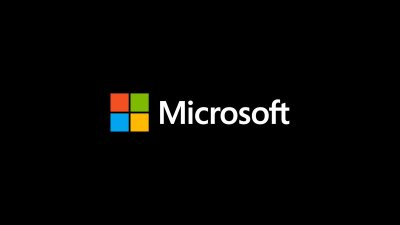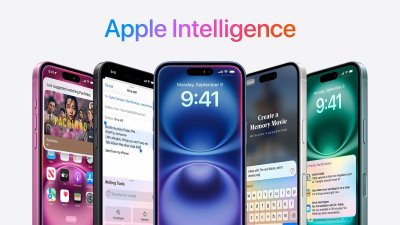Clevis
Build and sell AI-powered apps without code.
No-Code AI AI App Builder AI-Powered Applications Pre-configured Processing Text Generation Image GenerationTool Information
| Primary Task | Apps |
|---|---|
| Category | specialized-technologies |
| Sub Categories | no-code-platforms generative-text art-generation |
| Pricing | Free + from $29/mo |
Clevis is a tool specifically crafted to empower users to create AI-powered applications without the need for writing code. It does so by offering an array of pre-configured processing steps that facilitate building and running applications equipped with advanced features such as text and image generation, and web scraping. Users also have the ability to sell the apps made through Clevis. The platform isn't limited to just creation, it covers a spectrum of functionalities such as sharing the app through a publicly accessible link or selling access to the app with usage-based pricing. Moreover, one can customize their app to reflect their branding theme and colors, and even embed it on an existing website. Clevis caters to various app creation needs including constructing recipes, generating characters for literary works, recommending appropriate clothing based on weather and auto-creating blog posts for Wordpress among others. Furthermore, users can schedule the app to run tasks automatically, thus streamlining and automating tasks.
| Pros |
|---|
|
| Cons |
|---|
|
Frequently Asked Questions
1. What is Clevis?
Clevis is a user-friendly platform designed to enable individuals, even those without coding experience, to develop AI-powered applications.
2. How does Clevis allow non-coders to develop apps?
Clevis allows non-coders to develop apps by providing an intuitive interface with a wide range of pre-built processing steps. Users can combine these steps such as user input, AI processing, and web scraping to build their own applications from scratch.
3. What AI features does Clevis support in application development?
Clevis supports various AI features in application development, including text generation, image manipulation, and the building of interactive chat interfaces.
4. Can apps created with Clevis generate text and manipulate images?
Yes, applications created with Clevis do have the capabilities to generate text and manipulate images as part of the feature offerings of the platform.
5. How can users share Clevis-created apps?
Users can share apps created with Clevis by distributing a generated link. This link is created when the app is ready and published, allowing it to be shared with anyone.
6. How does the monetization feature on Clevis work?
The monetization feature on Clevis works by enabling users to connect their Stripe account. By doing this, users can implement usage-based pricing models and start profiting from their work.
7. Is there a step-by-step process to build apps on Clevis?
Yes, there is a step-by-step process to build apps on Clevis. This allows individuals to create their applications by sequentially combining aspects such as user input, AI-processing, and web scraping.
8. What is the role of user-input, AI-processing, and web scraping in the development of apps on Clevis?
In the development of apps on Clevis, user-input functions as the manner in which users provide commands or data to the app. AI-processing is used to automate and enhance functionality such as text generation or image manipulation within the app. Web scraping is integrated to pull data from the internet and use it within the app.
9. Is it possible to build interactive chat interfaces with Clevis?
Yes, it is possible to build interactive chat interfaces with Clevis. These can serve as a communication portal between the application and its users.
10. What is the purpose of the app library in Clevis?
The purpose of the app library in Clevis is to stimulate creativity by offering users a collection of existing apps developed using the platform. This provides insight into the capabilities of the tool and can serve as inspiration for user's own application concepts.
11. Is coding knowledge necessary to create applications on Clevis?
No, coding knowledge is not necessary to create applications on Clevis. The platform is designed to facilitate the creation of AI-powered applications without needing to write any code.
12. How does Clevis encourage creativity in app development?
Clevis encourages creativity in app development by offering a library of existing apps for inspiration. Moreover, its wide range of pre-built processing steps and its enabling of easy combination of user input, AI processing, and web scraping invite creative application designs.
13. What sort of apps can be built using Clevis?
The sort of apps that can be built using Clevis are AI-powered applications with features such as text generation, image manipulation, and interactive chat interfaces. The limited scope is only dictated by the creativity and envisioning of the user.
14. How accessible is Clevis to individuals without a tech background?
Clevis is highly accessible to individuals without a tech background. Its emphasis on providing a user-friendly interface, a range of pre-built processing steps, and a step-by-step app development process, makes the platform easy to use for non-coders.
15. Can I connect my Stripe account to facilitate selling on Clevis?
Yes, you can connect your Stripe account to facilitate selling on Clevis. This is part of the platform's monetization feature that enables users to profit from their apps.
16. Does Clevis provide a shareable link once the app is ready?
Yes, Clevis does provide a shareable link once the app is ready. This link is generated upon the publication of the app, and can be shared to distribute the application.
17. How can I profit from my apps on Clevis?
You can profit from your apps on Clevis by making use of the platform's monetization feature. By connecting your Stripe account, you can implement usage-based pricing models and earn money from the use of your applications.
18. Does Clevis offer early access to features?
Clevis offers a feature where users can sign up to get an email as soon as they launch, which can be interpreted as offering early access to its features.
19. How can I gain insight into the capabilities of Clevis?
Users can gain insight into the capabilities of Clevis by browsing the platform's library of existing apps. Reviewing these apps provides inspiration and demonstrates the capabilities of the tool.
20. What is the range of pre-built processing steps available on Clevis?
Clevis offers a wide range of pre-built processing steps available, including but not limited to user input, AI processing, and web scraping steps.
Comments
Similar Tools
Related News

Apple is reportedly taking a significant step towards revitalizing its long-struggling virtual assistant, Siri, by deploying an...
@devadigax | Sep 28, 2025

Microsoft has begun rolling out a significant update to its Photos app on Windows 11 that leverages artificial intelligence (AI...
@devadigax | Sep 26, 2025

Apple’s release of iOS 26 marks a significant milestone in the integration of local artificial intelligence within mobile appl...
@devadigax | Sep 26, 2025

OpenAI has launched **ChatGPT Pulse**, a groundbreaking feature designed to proactively deliver personalized morning briefs to...
@devadigax | Sep 25, 2025

A new contender in the social media landscape, Neon, has rocketed to the number two spot on the Apple App Store, not by revolut...
@devadigax | Sep 24, 2025

Google Photos users on Android devices are set to experience a paradigm shift in photo editing, thanks to a groundbreaking new...
@devadigax | Sep 23, 2025
 AI Tool Buzz
AI Tool Buzz
 CloudflareAI
CloudflareAI Myple
Myple Create
Create